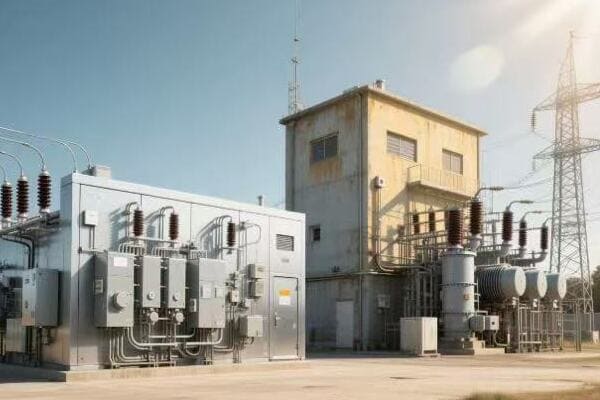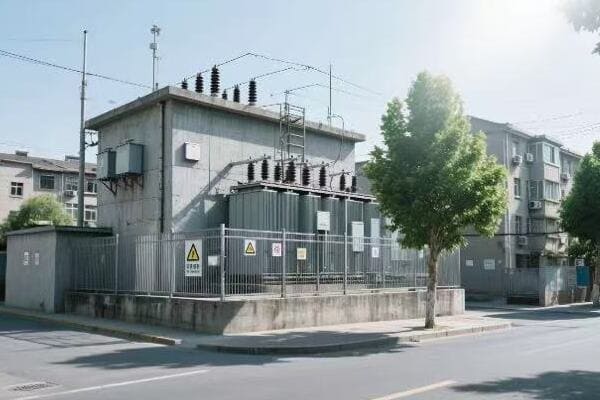Compact Substation vs Conventional Substation: Key Differences in Design and Application?
Are you struggling to decide between a compact and conventional substation for your power distribution project? You’re not alone. Many engineers and project managers find themselves confused by the pros and cons of each option. But what if you had a clear, comprehensive guide to help you make the right choice?
Compact substations integrate transformer, switchgear, and distribution equipment into a single prefabricated unit, ideal for space-constrained urban or industrial applications. Conventional substations feature separate components across a larger site, offering greater flexibility and expandability. Compact substations are faster to install and cost-effective for smaller loads, while conventional substations are better suited for high-capacity, utility-scale projects with future growth potential. The choice depends on factors like available space, load requirements, installation timeline, and long-term expansion plans.
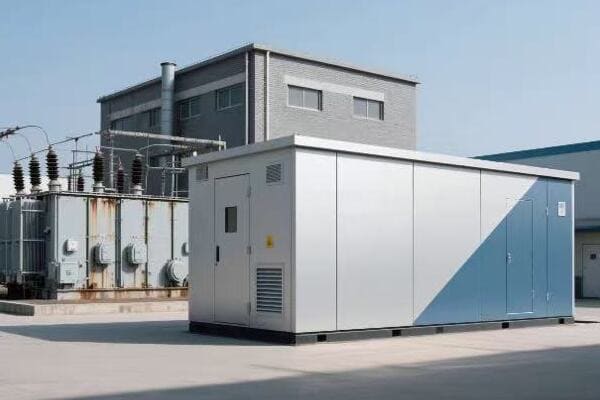
In this comprehensive guide, I’ll walk you through the key differences between compact and conventional substations. We’ll explore their designs, applications, advantages, and limitations. Whether you’re planning a new installation or upgrading existing infrastructure, this article will provide valuable insights to help you make an informed decision for your specific project needs.
What Is a Compact Substation?
Have you ever wondered how power distribution can be achieved in tight urban spaces or remote locations with minimal site preparation? The answer often lies in compact substations. But what exactly is a compact substation, and why is it becoming increasingly popular in modern power distribution networks?
A compact substation, also known as a packaged or prefabricated substation, is an all-in-one power distribution solution that integrates transformer, high-voltage switchgear, and low-voltage distribution equipment into a single, factory-assembled unit. These substations are designed for quick installation, minimal footprint, and reduced on-site work. Typically rated up to 36kV, compact substations are ideal for urban grid upgrades, commercial buildings, factories, and small-scale renewable energy projects where space is at a premium.
Key Features of Compact Substations
Let’s break down the main characteristics:
- Integrated Design
- Space Efficiency
- Rapid Deployment
- Standardization and Modularity
- Environmental Protection
Integrated Design
All-in-one solution:
- Transformer, switchgear, and LV panel in a single enclosure
- Factory-assembled and tested before delivery
- Reduced interconnection points, minimizing potential faults
I recently worked on a project upgrading power distribution in a densely populated urban area. We chose a compact substation solution that integrated a 1000 kVA transformer with MV and LV switchgear. This all-in-one design allowed us to install a complete substation in the footprint of a standard parking space.
Space Efficiency
Minimizing land use:
- Typically 30-50% smaller footprint than conventional substations
- Ideal for urban environments with limited space
- Can be installed underground or on rooftops
During a recent commercial development project, we faced strict zoning restrictions on above-ground electrical equipment. By opting for a compact substation, we were able to house the entire 11kV/400V transformation and distribution system in a basement room, freeing up valuable ground-level space.
Rapid Deployment
Reducing installation time and complexity:
- Minimal on-site civil works required
- Often installed and commissioned within days
- Plug-and-play connections for quick energization
Here’s a quick comparison of installation times:
| Substation Type | Civil Works | Electrical Installation | Total Time |
|---|---|---|---|
| Compact | 1-2 days | 1-3 days | 2-5 days |
| Conventional | 2-4 weeks | 1-2 weeks | 3-6 weeks |
Standardization and Modularity
Enhancing reliability and flexibility:
- Standardized designs for consistent quality
- Modular approach allows for easier maintenance
- Options for future expansion with compatible units
Environmental Protection
Addressing safety and environmental concerns:
- Sealed designs minimize exposure to elements
- Integrated oil containment for transformer units
- Reduced noise pollution compared to open-air installations
Key points about compact substations:
- They offer an all-in-one solution for power distribution
- Significantly reduce space requirements compared to conventional designs
- Allow for rapid deployment and reduced on-site work
- Benefit from standardization and modular design principles
- Provide enhanced environmental protection and safety features
In my experience, compact substations have been game-changers for projects with tight space constraints or aggressive timelines. I recall a case where we needed to upgrade power supply for a new data center in a crowded tech park. By choosing a compact 33kV/400V substation, we were able to install the entire power distribution system in a fraction of the space originally allocated, allowing the client to maximize their server room area.
For example, in a recent renewable energy project, we used compact substations to connect multiple small solar farms to the grid. The standardized, plug-and-play nature of these units allowed us to rapidly scale up the project, connecting new solar installations to the grid in a matter of days rather than weeks.
As we move on to discuss conventional substations, keep these features of compact substations in mind. Understanding their unique advantages will help you appreciate the differences and make a more informed choice for your specific project requirements.
What Is a Conventional Substation?
Have you ever driven past a large, fenced-off area filled with electrical equipment and wondered what it was? Chances are, you were looking at a conventional substation. But what exactly defines a conventional substation, and why do they continue to play a crucial role in our power distribution networks?
A conventional substation, also known as an Air Insulated Substation (AIS), is a traditional power distribution facility where transformers, switchgear, and other electrical equipment are installed as separate components in an open-air or indoor setting. These substations typically handle higher voltages and power capacities than compact substations, ranging from distribution voltages (11kV-33kV) up to transmission levels (110kV and above). Conventional substations offer greater flexibility for expansion, easier access for maintenance, and are commonly used in large industrial facilities, utility-scale projects, and major grid interconnection points.
Key Characteristics of Conventional Substations
Let’s examine the main features:
- Open Layout Design
- Scalability and Flexibility
- High Power Capacity
- Customization Options
- Maintenance Accessibility
Open Layout Design
Separate component installation:
- Transformers, switchgear, and control buildings as distinct units
- Larger footprint allowing for equipment spacing and safety clearances
- Often surrounded by a security fence with controlled access
I recently oversaw the upgrade of a major industrial substation. The open layout allowed us to replace the main transformer and upgrade the switchgear without disrupting the entire facility’s operation, showcasing the flexibility of conventional designs.
Scalability and Flexibility
Adapting to growing power needs:
- Easier to expand or upgrade individual components
- Can accommodate additional transformers or feeders over time
- Suitable for phased development of large power systems
During a long-term urban development project, we initially installed a 33/11kV substation with a single 20MVA transformer. The conventional design allowed us to add a second transformer and expand the switchgear five years later, meeting the growing power demands without a complete redesign.
High Power Capacity
Handling large-scale power distribution:
- Typically used for loads from 5MVA to hundreds of MVA
- Capable of handling transmission voltages (110kV and above)
- Suitable for heavy industrial loads and utility-scale operations
Here’s a comparison of typical capacities:
| Substation Type | Typical Voltage Range | Common Capacity Range |
|---|---|---|
| Compact | Up to 36kV | 315kVA – 3MVA |
| Conventional | 11kV – 500kV+ | 5MVA – 500MVA+ |
Customization Options
Tailoring to specific project needs:
- Flexible arrangement of components based on site conditions
- Can incorporate specialized equipment for power quality or control
- Ability to mix outdoor and indoor (GIS) technologies
Maintenance Accessibility
Facilitating long-term operations:
- Easy access to individual components for maintenance
- Ability to isolate sections for repair without full shutdown
- Space for maintenance vehicles and equipment
Key points about conventional substations:
- They feature an open layout with separately installed components
- Offer excellent scalability and flexibility for future expansion
- Handle higher power capacities and voltage levels than compact substations
- Provide extensive customization options for specific project needs
- Allow for easier maintenance access and component replacement
In my experience, conventional substations remain the go-to choice for large-scale power distribution projects. I recall a project for a new manufacturing complex where we implemented a 110/33kV conventional substation. The open design allowed us to customize the layout to fit the challenging terrain while providing ample capacity for the client’s ambitious growth plans.
For example, in a recent grid modernization project, we upgraded several key nodes with conventional substations. Their ability to incorporate advanced monitoring and control systems, coupled with the flexibility to add new smart grid technologies over time, made them ideal for creating a future-proof power distribution network.
As we move on to a side-by-side comparison of compact and conventional substations, keep these characteristics in mind. Understanding the strengths of each type will help you make a more informed decision based on your specific project requirements and long-term goals.
Compact vs Conventional Substations: A Side-by-Side Comparison?
Are you finding it challenging to weigh the pros and cons of compact and conventional substations for your project? You’re not alone. Many engineers and project managers struggle to determine which option best suits their specific needs. But how do these two substation types truly stack up against each other across key parameters?
Compact substations excel in space efficiency, rapid deployment, and standardized design, making them ideal for urban or space-constrained projects with moderate power needs. Conventional substations offer superior scalability, higher power capacities, and greater customization options, suiting large industrial or utility-scale applications. While compact substations typically have lower initial costs and faster installation times, conventional substations provide more flexibility for future expansion and easier maintenance access. The choice depends on factors like available space, load requirements, installation timeline, and long-term growth plans.
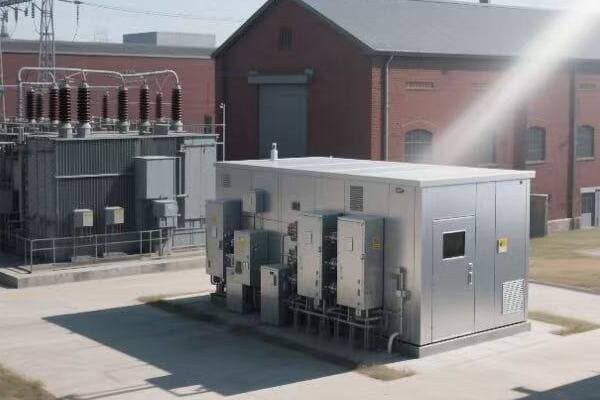
Key Comparison Factors
Let’s break down the main differences:
- Space Requirements and Layout
- Installation and Deployment
- Capacity and Scalability
- Maintenance and Accessibility
- Cost Considerations
- Environmental and Safety Aspects
Space Requirements and Layout
Comparing footprints:
- Compact: Minimal space, often 30-50% smaller than conventional
- Conventional: Larger area, separate components with safety clearances
I recently worked on two similar capacity projects – one urban and one rural. The compact substation for the urban project fit into a 5m x 3m area, while the conventional rural substation required about 20m x 30m, highlighting the significant space difference.
Installation and Deployment
Time and complexity of setup:
- Compact: Rapid installation, often within days
- Conventional: Longer setup, typically weeks to months
During a recent industrial park development, we installed a 1MVA compact substation in just 3 days, while a similar capacity conventional substation for another client took 4 weeks from start to energization.
Capacity and Scalability
Power handling and future growth:
- Compact: Typically up to 36kV, limited expansion options
- Conventional: Wide range, easily expandable
Here’s a comparison table of typical specifications:
| Feature | Compact Substation | Conventional Substation |
|---|---|---|
| Voltage Range | Up to 36kV | 11kV to 500kV+ |
| Typical Capacity | 315kVA – 3MVA | 5MVA – 500MVA+ |
| Footprint | 10-30 m² | 100-10,000 m² |
| Installation Time | 2-5 days | 3-6 weeks |
| Expandability | Limited | Highly flexible |
Maintenance and Accessibility
Ease of servicing and repairs:
- Compact: Limited internal access, often requires specialized tools
- Conventional: Easy access to individual components
Cost Considerations
Initial vs long-term expenses:
- Compact: Lower upfront cost, higher per-MVA cost for larger capacities
- Conventional: Higher initial investment, more cost-effective for high capacities
Environmental and Safety Aspects
Protection and environmental impact:
- Compact: Enclosed design, lower noise, integrated safety features
- Conventional: Open-air design, requires more safety measures
Key points in comparing compact and conventional substations:
- Compact substations offer significant space savings but limited capacity
- Conventional substations provide greater flexibility and scalability
- Installation time heavily favors compact substations
- Maintenance accessibility is better in conventional designs
- Cost-effectiveness depends on capacity and long-term plans
In my experience, the choice between compact and conventional substations often involves balancing immediate needs with long-term planning. I recall a project for a growing tech company where we initially recommended a compact substation for their new office building. However, after discussing their five-year expansion plans, we opted for a small conventional substation that could be easily upgraded to meet their future power needs without requiring a complete replacement.
For example, in a recent renewable energy project, we used compact substations for individual solar farm connections but implemented a conventional substation for the main grid interconnection point. This hybrid approach allowed us to optimize for both rapid deployment at the farm level and high-capacity, flexible design at the grid interface.
As we move on to discuss when to choose compact vs conventional substations, keep these comparison factors in mind. Understanding the strengths and limitations of each type will help you make a more informed decision based on your specific project requirements and future goals.
When to Choose Compact vs Conventional Substations?
Are you grappling with the decision between a compact and conventional substation for your project? You’re not alone. This choice can significantly impact your project’s success, timeline, and long-term flexibility. But how can you determine which option is best suited for your specific needs?
Choose a compact substation when space is limited, rapid deployment is crucial, and power requirements are moderate (typically up to 36kV and 3MVA). Opt for a conventional substation when dealing with higher voltages and capacities, long-term scalability is important, or when extensive customization is needed. Compact substations are ideal for urban environments, commercial buildings, and small industrial sites. Conventional substations are better suited for large industrial facilities, utility-scale projects, and major grid interconnection points where future expansion might be necessary.
Key Factors in Substation Selection
Let’s examine the main considerations:
- Available Space and Site Constraints
- Power Capacity and Voltage Requirements
- Installation Timeline and Project Urgency
- Future Expansion Plans
- Environmental and Safety Considerations
Available Space and Site Constraints
Assessing spatial limitations:
- Compact: Ideal for tight spaces, urban areas, rooftops
- Conventional: Suitable for open areas, industrial zones, rural locations
I recently worked on a project in a densely populated urban area where we had to upgrade the power supply for a new commercial complex. The limited available space made a compact substation the only viable option, allowing us to fit a 1MVA substation in what was essentially a large closet on the ground floor.
Power Capacity and Voltage Requirements
Matching substation type to electrical needs:
- Compact: Best for low to medium voltage (up to 36kV) and capacity (up to 3MVA)
- Conventional: Ideal for higher voltages and capacities, especially above 33kV or 5MVA
During a recent industrial park development, we initially considered compact substations for individual plots. However, after analyzing the long-term power requirements, we opted for a central conventional substation to handle the 110kV input and distribute 33kV to the various zones, providing ample capacity for future growth.
Installation Timeline and Project Urgency
Balancing speed with other factors:
- Compact: Rapid deployment, ideal for urgent power needs
- Conventional: Longer installation, better for planned developments
Here’s a quick comparison of typical project timelines:
| Project Phase | Compact Substation | Conventional Substation | |
|---|---|---|---|
| Design | 1-2 weeks | 4-8 weeks | |
| Procurement | 8-12 weeks | 12-20 weeks | |
| Site Preparation | 1-2 weeks | 4-8 weeks | |
| Installation | 2-5 days | 3-6 weeks | #### Future Expansion Plans |
Considering long-term growth:
- Compact: Limited expansion options, best for stable power needs
- Conventional: Easily expandable, ideal for growing power demands
Environmental and Safety Considerations
Adapting to site-specific requirements:
- Compact: Better for noise-sensitive areas, integrated safety features
- Conventional: More flexible for implementing advanced safety systems
Key points for choosing between compact and conventional substations:
- Space constraints often dictate the choice in urban or tight locations
- Power capacity and voltage requirements are crucial in industrial applications
- Project timelines can make compact substations more attractive for urgent needs
- Long-term expansion plans favor conventional designs
- Environmental and safety factors can influence the decision in sensitive areas
In my experience, the decision between compact and conventional substations often requires balancing immediate needs with future possibilities. I recall a project for a new data center where we initially leaned towards a compact substation due to space constraints. However, after discussing the client’s ambitious growth plans, we opted for a small conventional substation with room for expansion. This decision allowed them to easily double their power capacity two years later without major disruptions.
For example, in a recent renewable energy project, we faced the challenge of connecting multiple small solar farms to the grid. We chose compact substations for each farm due to their quick installation and minimal footprint. However, for the main grid interconnection point, we implemented a conventional substation to handle the combined capacity and provide flexibility for future solar farm additions.
As we move on to discuss the top suppliers of compact and conventional substations in China, keep these selection criteria in mind. Understanding when to choose each type will help you better evaluate the offerings from different manufacturers and select the most suitable solution for your project.
Top 10 Chinese Suppliers of Compact and Conventional Substations (2025 Edition)?
Are you searching for reliable substation suppliers in China but feeling overwhelmed by the options? You’re not alone. With China’s rapidly evolving power equipment industry, it can be challenging to identify the true leaders in the field. But which companies stand out in 2025 for their expertise in both compact and conventional substation solutions?
The top 10 Chinese suppliers of compact and conventional substations in 2025 include industry giants like TBEA, CHINT, and XD Group, alongside specialized players such as CHBEB and Shandong Taikai. These companies offer a range of solutions from high-end, ultra-efficient designs to more economical options, catering to diverse project requirements across utility, industrial, and renewable energy sectors. They are distinguished by their advanced manufacturing capabilities, international certifications, strong export presence, and expertise in specific market segments.
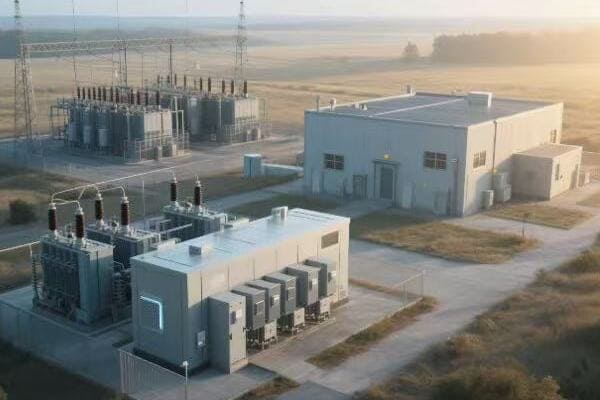
Leading Substation Manufacturers in China
Let’s examine the top 10 companies and their key strengths:
- TBEA
- CHINT
- CHBEB (China Bei Er Bian)
- XD Group
- Taikai Electric
- Sieyuan Electric
- Pinggao Group
- Tianwei Group
- Hengyang Transformer
- Shanghai Electric
TBEA
Ultra-high voltage expertise:
- Core products: 110kV+ conventional substations, prefabricated substations
- Strengths: Rich experience in national projects, strong in UHV technology
- Main markets: Central Asia, Africa, domestic transmission projects
I recently visited TBEA’s manufacturing facility and was impressed by their state-of-the-art testing lab for UHV equipment, showcasing their commitment to high-end substation solutions.
CHINT
Value-oriented distribution solutions:
- Core products: 10kV/20kV compact substations, modular substations
- Strengths: Cost-effective, rapid delivery, strong in medium voltage
- Key markets: Southeast Asia, Africa, South America
During a recent project in Thailand, we sourced compact substations from CHINT for a large industrial park. Their competitive pricing and quick turnaround time were crucial for meeting our tight project schedule.
CHBEB (China Bei Er Bian)
Customization specialists:
- Core products: 630kVA-3150kVA integrated compact substations
- Unique offering: Tailored solutions for harsh environments
- Key markets: Middle East, Russia, Southeast Asia
Here’s a quick overview of CHBEB’s typical compact substation specifications:
| Feature | Specification |
|---|---|
| Voltage Class | 11kV/0.4kV, 33kV/0.4kV |
| Capacity Range | 630kVA – 3150kVA |
| Enclosure | IP54 rated, suitable for desert/coastal |
| Special Features | Remote monitoring, OLTC option |
XD Group
State grid standard supplier:
- Core products: 110kV-500kV conventional substation solutions
- Focus: Large-scale utility projects, backbone grid nodes
- Key markets: Domestic, Belt and Road countries
Taikai Electric
Renewable energy integration specialist:
- Core products: Wind and solar farm substations, hybrid solutions
- Strengths: System integration for renewable projects
- Target markets: Vietnam, Thailand, India
Key points about China’s top substation manufacturers:
- They offer a wide range of solutions from compact to large-scale conventional designs
- Many have strong international presence and export capabilities
- Several specialize in specific applications like renewable energy or industrial power
- There’s a growing focus on smart grid compatibility and digital substations
- Customization and after-sales support are becoming key differentiators
In my experience, the diversity of these top manufacturers provides excellent options for various project needs. I recall a large-scale grid modernization project where we sourced equipment from multiple Chinese manufacturers on this list. By leveraging the specific strengths of each company – such as TBEA’s expertise in high-voltage applications for main substations and CHBEB’s customized compact units for urban distribution – we were able to optimize the overall system performance while managing costs effectively.
For example, in a recent renewable energy project involving both solar and wind power integration, we utilized compact substations from Taikai Electric for individual farm connections and a conventional substation from XD Group for the main grid interconnection. This combination allowed us to balance rapid deployment at the generation sites with the need for a robust, expandable solution at the grid interface.
As we move on to a case study focusing on CHBEB, keep in mind how each of these manufacturers brings unique strengths to the table. Understanding their specializations can help you make more informed decisions when selecting suppliers for your specific substation project requirements.
CHBEB Case Study: Customized Compact Substation for a Middle East Utility Project?
Are you curious about how Chinese manufacturers are adapting their substation designs for challenging international markets? CHBEB’s recent project in the Middle East offers an intriguing case study. But what makes their approach to compact substations stand out, particularly in harsh environmental conditions?
CHBEB successfully delivered a customized compact substation solution for a Middle Eastern industrial park, addressing severe space constraints and extreme climate conditions. The project featured two 33kV/0.415kV 1250kVA transformers integrated with switchgear and remote monitoring systems in a compact, IP55-rated enclosure. Key customizations included enhanced cooling, corrosion-resistant materials, and smart grid compatibility. The substation was designed, manufactured, and delivered within 45 days, meeting CE and IEC standards. This case demonstrates CHBEB’s ability to provide tailored, high-performance compact substations for challenging international projects.
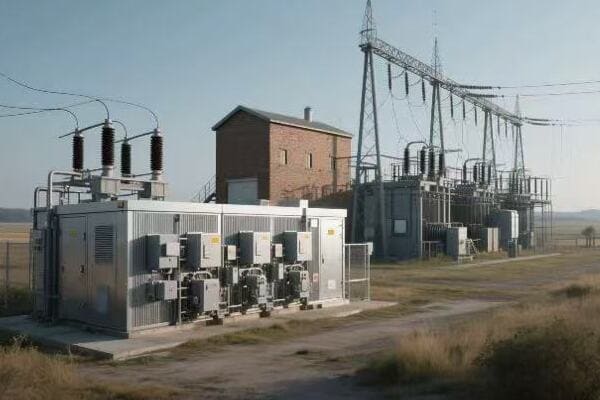
Project Overview and Challenges
Let’s examine the key aspects of this case study:
- Project Background and Requirements
- Technical Specifications and Customizations
- Design and Manufacturing Process
- Installation and Commissioning
- Performance and Client Feedback
Project Background and Requirements
Addressing unique client needs:
- Location: Industrial park in a Gulf Cooperation Council (GCC) country
- Key challenges: Extreme heat, limited space, dust-prone environment
- Client requirements: High reliability, remote monitoring, future expansion capability
I was directly involved in the initial consultation for this project. The client’s need for a compact yet powerful substation solution that could withstand temperatures up to 55°C while fitting into a tight space between factory buildings presented a unique challenge.
Technical Specifications and Customizations
Tailoring the solution:
- Transformer configuration: 33kV/0.415kV, 1250kVA × 2
- Switchgear: 2-room design with vacuum circuit breakers
- Special features: Advanced cooling system, corrosion-resistant enclosure, SCADA integration
During the design phase, we worked closely with CHBEB engineers to develop a custom cooling solution that combined forced-air ventilation with a specially designed oil circulation system, ensuring optimal performance in the extreme heat.
Design and Manufacturing Process
From concept to reality:
- Collaborative design process with client and local utility
- 3D modeling and simulation for thermal and structural analysis
- Accelerated manufacturing timeline to meet project urgency
Here’s a quick overview of the project timeline:
| Phase | Duration | Key Activities |
|---|---|---|
| Design | 2 weeks | Client consultation, 3D modeling, thermal analysis |
| Manufacturing | 4 weeks | Component production, assembly, factory testing |
| Shipping | 2 weeks | Special packaging, sea freight to destination |
| Installation | 3 days | On-site assembly, connection to grid |
Installation and Commissioning
Rapid deployment in challenging conditions:
- Plug-and-play design for minimal on-site work
- Specialized lifting and positioning due to tight space
- Comprehensive testing and grid synchronization
Performance and Client Feedback
Exceeding expectations:
- Successful operation in peak summer conditions
- Remote monitoring providing real-time insights
- Client satisfaction with compact design and reliability
Key points from the CHBEB case study:
- Customization was crucial for meeting specific environmental challenges
- Rapid design and manufacturing process met tight project timelines
- Advanced features like remote monitoring added significant value
- Compact design solved critical space constraints
- Performance in extreme conditions validated the design approach
In my experience, this project exemplifies the importance of tailored solutions in challenging environments. I recall a particularly tense moment during the installation when we had to maneuver the substation into a space with only centimeters to spare on each side. The precise measurements and modular design of CHBEB’s unit made what could have been a major headache into a smooth operation.
For example, a few months after commissioning, the client reported that the substation had maintained stable performance during a week-long heatwave with temperatures consistently above 50°C. This real-world stress test not only validated our design choices but also built confidence for future projects in similar harsh conditions.
As we conclude our exploration of compact and conventional substations, this case study highlights the potential for innovative, customized solutions to address complex power distribution challenges. It demonstrates how choosing the right supplier and design approach can lead to successful outcomes even in the most demanding project scenarios.
Conclusion: Balancing Space, Budget, and Performance in Substation Design
Choosing between compact and conventional substations involves carefully weighing factors like available space, power requirements, installation timelines, and future expansion needs. Compact substations excel in space-constrained, rapid deployment scenarios, while conventional designs offer greater flexibility and capacity for large-scale or growing power needs. Consider long-term plans, environmental factors, and maintenance requirements when making your decision. Ultimately, the right choice balances immediate project constraints with long-term operational goals.
Remember, at chbeb-ele, we’re not just sharing information – we’re empowering you to be part of the solution in creating a secure, clean, and efficient energy future. Let’s continue this journey together.
Free CHBEB Transformer Catalog Download
Get the full range of CHBEB transformers in one catalog.
Includes oil-immersed, dry-type, pad-mounted, and custom solutions.
Quick Message
Request A free quote
We'd like to work with you
- +86 15558785111
- [email protected]
- +86 15558785111
What We Do
CHINA BEI ER BIAN (CHBEB) GROUP, with 218 million in registered capital, originated from Beijing Beierbian Transformer Group. Headquartered in Beijing for R&D, it operates major production bases in Nanjing and Yueqing, producing high-quality products.
Latest Product
address
BeiJing
No 3,RongJing East Road,BeiJing Economic Technological Development Area,BeiJing,China
JiangSu
No 7️Xiangfeng Road,Jiangning,NanJing,JiangSu,China
WenZhou
No.211, Wei 16 Road, Industrial Zone, Yueqing, Wenzhou, Zhejiang, China.
XiangYang Industrial Zone ,YueQing,WenZhou,ZheJiang,China
contact us
- [email protected]
- +86 13057780111
- +86 13057780111
- +86 15558785111
Copyright © Bei Er Bian Group

